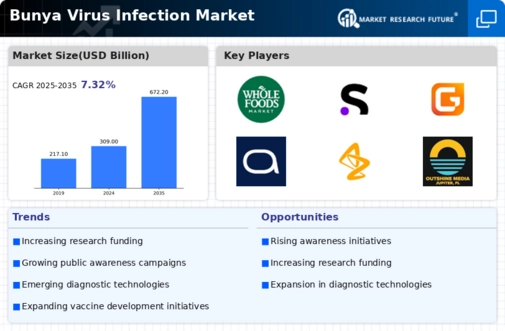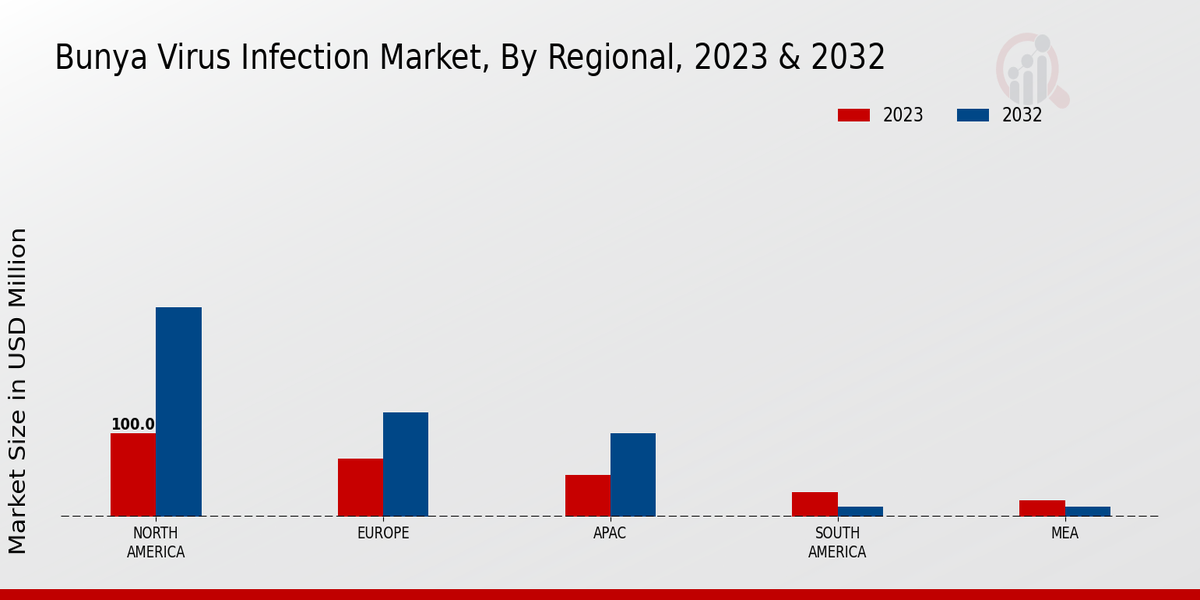Market Growth Projections
The Global Bunya Virus Infection Market Industry is projected to experience substantial growth over the next decade. With a market value expected to reach 309.0 USD Billion in 2024 and potentially 672.2 USD Billion by 2035, the industry is poised for a compound annual growth rate of 7.32% from 2025 to 2035. This growth trajectory is influenced by various factors, including increased incidence of infections, advancements in diagnostic technologies, and heightened public awareness. As stakeholders in the healthcare sector respond to these dynamics, the market is likely to expand, reflecting the ongoing efforts to combat Bunya virus infections globally.
Advancements in Diagnostic Technologies
Technological advancements in diagnostic tools are significantly influencing the Global Bunya Virus Infection Market Industry. The development of rapid and accurate diagnostic tests enables healthcare providers to identify Bunya virus infections more efficiently. For instance, the introduction of molecular assays and serological tests has improved the speed of diagnosis, allowing for timely treatment and management of the disease. This is particularly crucial in endemic regions where early detection can mitigate outbreaks. As diagnostic capabilities improve, the demand for related healthcare services and products is expected to rise, further driving the market.
Growing Awareness and Education Programs
Public awareness and education programs about Bunya virus infections are becoming increasingly prevalent, thereby impacting the Global Bunya Virus Infection Market Industry. Health organizations are actively engaging communities to educate them about prevention strategies, symptoms, and the importance of seeking medical attention. This heightened awareness is likely to lead to earlier diagnosis and treatment, reducing the overall burden of the disease. Furthermore, as more individuals become informed about the risks associated with Bunya virus infections, there may be a corresponding increase in demand for preventive measures and healthcare services, contributing to market growth.
Rising Incidence of Bunya Virus Infections
The Global Bunya Virus Infection Market Industry is witnessing a notable increase in reported cases of Bunya virus infections, particularly in regions such as Australia and parts of Africa. This rise can be attributed to various factors, including climate change and increased human-wildlife interactions. As the virus is transmitted primarily through mosquito bites, fluctuations in weather patterns may lead to higher mosquito populations, thereby increasing transmission rates. The growing number of infections necessitates enhanced healthcare responses and surveillance systems, contributing to the expansion of the Global Bunya Virus Infection Market Industry.
Increasing Investment in Research and Development
Investment in research and development is a critical driver for the Global Bunya Virus Infection Market Industry. Governments and private organizations are allocating substantial funds to understand the virus better and develop effective vaccines and treatments. For example, initiatives aimed at vaccine development are gaining momentum, with several candidates currently in various stages of clinical trials. This focus on R&D not only aims to curb the spread of the virus but also enhances public health preparedness. As a result, the market is projected to grow, with estimates indicating a potential increase from 309.0 USD Billion in 2024 to 672.2 USD Billion by 2035.
Global Climate Change and Its Impact on Vector Populations
The effects of global climate change are profoundly affecting the Global Bunya Virus Infection Market Industry. Changes in temperature and precipitation patterns can alter the habitats and breeding cycles of mosquito populations, which are the primary vectors for Bunya virus transmission. As warmer climates expand the geographical range of these vectors, regions previously unaffected by the virus may experience outbreaks. This potential for increased transmission underscores the need for robust public health strategies and surveillance systems, thereby driving demand within the market. The anticipated compound annual growth rate of 7.32% from 2025 to 2035 reflects this growing concern.


























